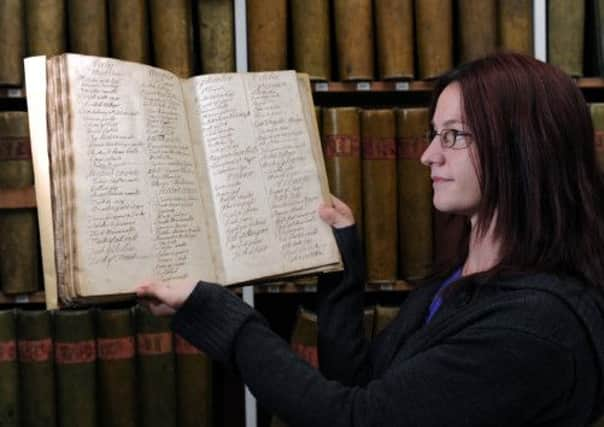Rice work if you can get it: Recipe for a mad dog bite


Sprinkle in generations of knowledge and garnish with the odd concoction or cure.
And marvel at the unique book which has been cooked up for anyone with an appetite for history.
Advertisement
Hide AdAdvertisement
Hide AdExperts at West Yorkshire Archive Service have compiled a book which, as well as featuring a raft of recipes from throughout the ages, includes formulas for cleaning leather boots, curing the bite of a mad dog and homemade shampoo.
The pamphlet, entitled Recipes Across the Years, was the brainchild of Jenny Brierley and Helen Toward, from West Yorkshire Archive Service, after they unearthed a wealth of old cook books.
“We have vast collections of material here and many of them have recipes in amongst them,” said Jenny.
She said that one of the most important hailed from the family who lived at the Palladian house, Nostell Priory, near Wakefield, where the cook kept a book recording all the recipes used by the family.
Advertisement
Hide AdAdvertisement
Hide Ad“Many of the recipes contain ingredients which are no longer used or which are rare today but about two years ago we got a chef to make some of them at a public event,” said Jenny. “Now whenever we have a staff meeting, one person will make something from the recipe book and bring it in and they are very nice indeed.”
The booklet features recipes dating back as far as the eighteenth century including one concoction which boasts a cure for the bite of a mad dog.
Those brave enough are instructed to drink immediately a pint of good white vinegar, repeating it at 3pm and to spend the morning fasting.
They are then ordered to wash the affected part well with vinegar and often, then take away about 8oz of blood and finish by taking a large spoonful of rice for three mornings.
Advertisement
Hide AdAdvertisement
Hide AdNot all the recipes appear to be so bizarre and some will have a particular resonance today as people try to make their money go further.
Some hail from the period during the Second World War, when people had to ‘make do and mend.’
Jenny said: “One of the reasons behind the book was to make things like this more accessible to people. We’ve had a good response from people about the book, in fact when we were compiling it, we had far too many recipes so we haven’t ruled out doing another.”
The book is split into sections with starters, main courses and puddings and a chapter for unusual recipes.
Advertisement
Hide AdAdvertisement
Hide AdGems include a recipe for Mysterious Pudding from the 1920s, taken from a Kinsley Church recipe and a woman called Alice M Chapmen.
The tempting desert, which has to be steamed for one and a half hours, is served with a little marmalade and wine sauce.
Other treats for those with a sweet tooth include recipes for a chocolate cake that keeps and the intriguingly named ‘Gobly Cake’, taken from the Huddersfield Nurses’ League from the mid twentieth century.
Beverages have not been neglected either and for those wishing to wash down their Mysterious Pudding with lashings of something stronger, there are recipes for nettle beer, rhubarb wine and cider.
Advertisement
Hide AdAdvertisement
Hide AdElsewhere, practical solutions are offered for the most mundane of problems challenging those living in the eighteenth century.
A recipe from the Jowett family of Manningham in Bradford informs people how to clean leather breeches by mixing colouring, ochre, whitening; adding quicklime in equal quantities with hot water and soap, brushing it in, then putting on the colouring thick, letting it remain till dry and brushing off.
Jenny said: “People used to make things like their own soap and shampoo and other things and recipes for these can be found in historical documents. One of the things we did find was a recipe to make iron gall ink and, in fact, we have that on sale to the public at £2.50 a jar, together with a little booklet explaining what it is and how it is made.”